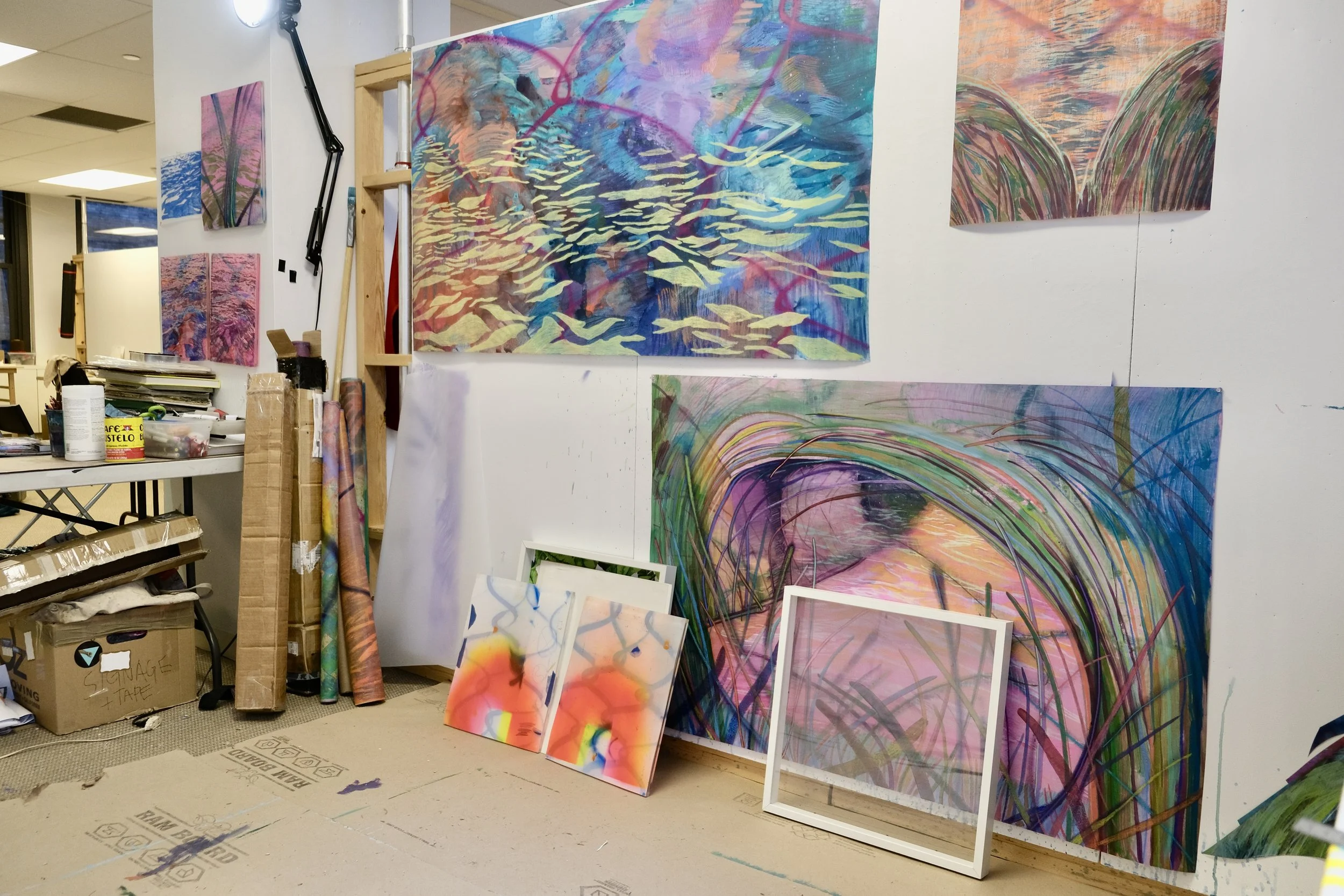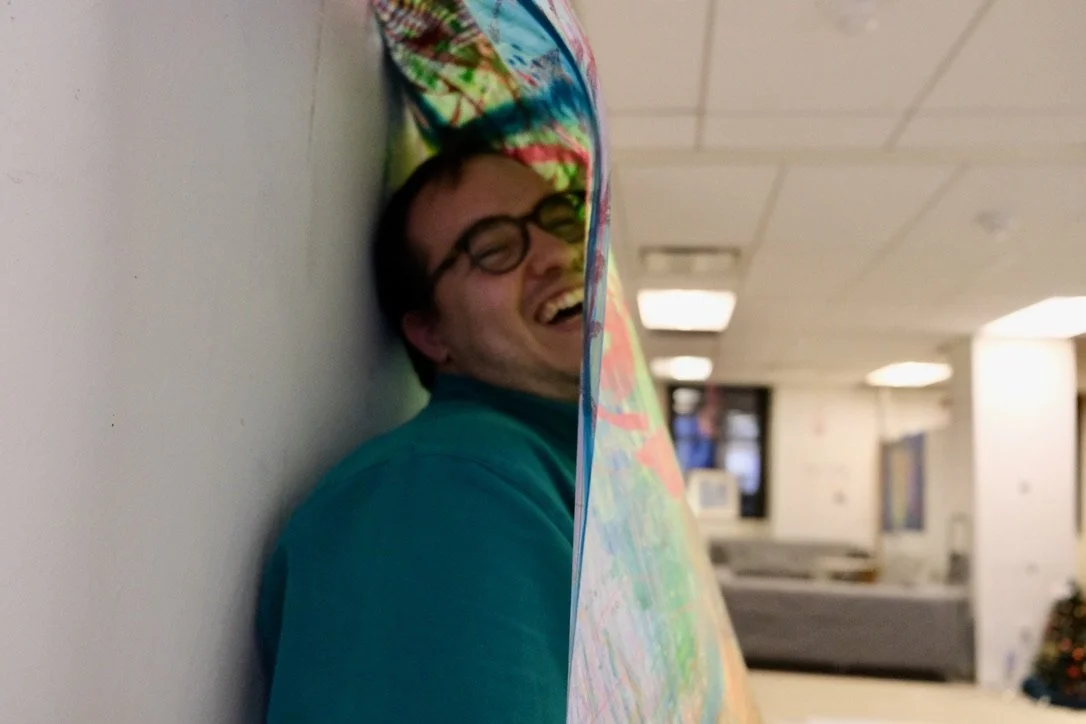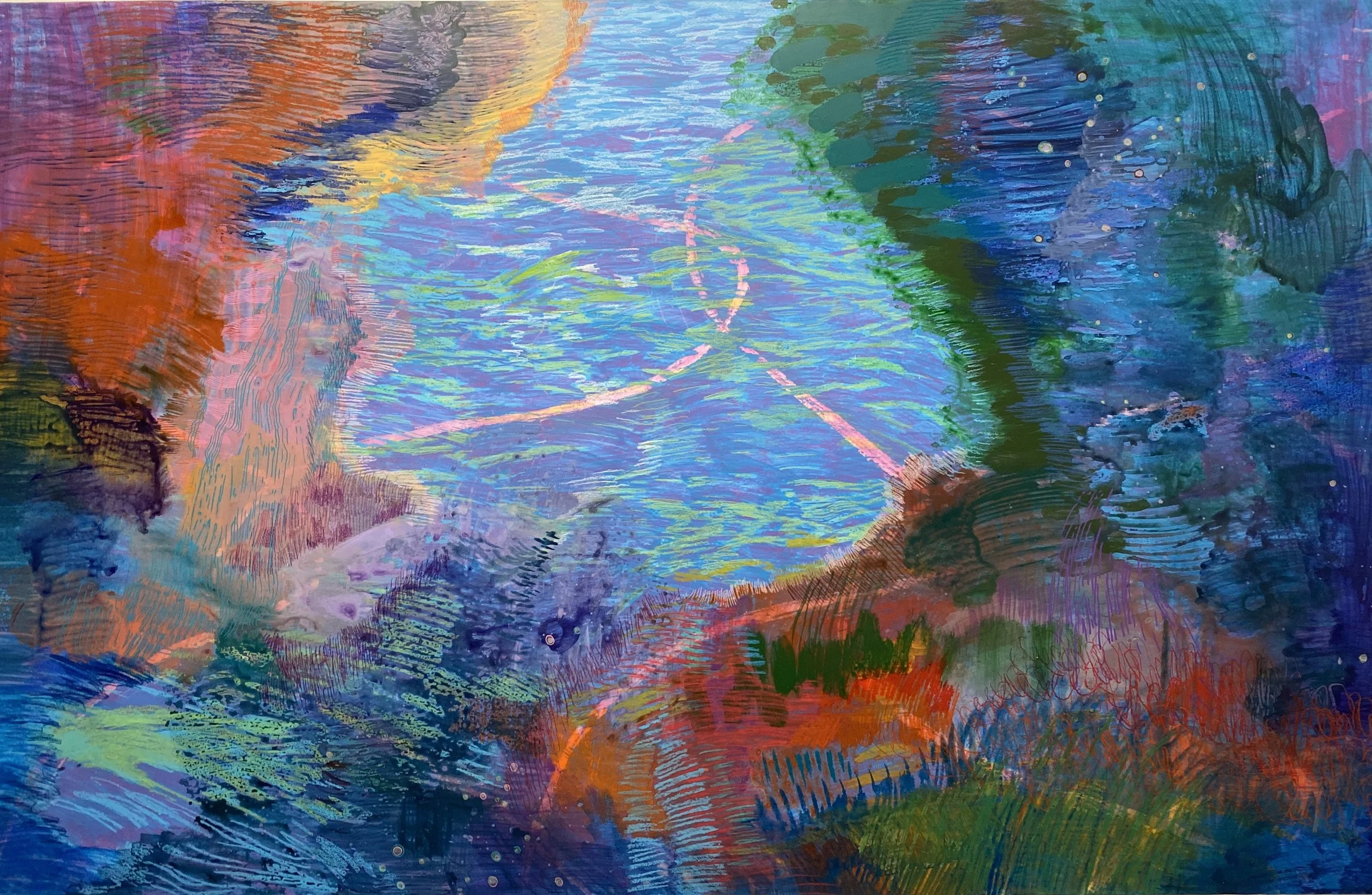Francisco Donoso on the Transformative Dimensions of Identity and Memory
Interviews in The Psychic Landscape series feature artists participating in February's NYC Culture Club exhibition. In this final interview, we delve into Francisco Donoso’s universe — an artist and co-curator of the show. Francisco invites us to journey through the layers of his "multilingual paintings," where mixed media on mylar create expansive and transformative visual spaces.
The conversation unfolds the significance of recurring motifs, such as the chain-link fence, and how abstraction becomes a conduit for expressing the complexities of identity, migration, and power structures.
Read on as we unravel the poetic terrains, memories, and temporalities embedded in Francisco's recent works — culminating in an exploration of the viewer's experience within The Psychic Landscape.
Francisco Donoso, born in Ecuador and raised in Miami, FL, is a transnational artist confronting the complexities of identity and migration. Since 2013, he has been a DACA recipient. Currently co-directing Tiger Strikes Asteroid NY, Francisco earned his BFA from Purchase College. Engaging in various fellowships and residencies, currently with LMCC, Francisco operates between NYC and Miami. His works on mylar offer an unfiltered exploration, moving viewers from conventional landscapes to the raw realms of their own minds.
"The Psychic Landscape" exhibition delves into multidimensional psychic spaces through color, materiality, and form. Can you share more about the specific elements and techniques you employ to create these immersive and abstracted environments?
I make what I refer to as “multilingual paintings”, which combine painting and drawing visual languages. Using mainly water-based media like acrylic, inks, spray paints, and colored pencils, I work on both sides of sheets of mylar. Using mylar allows me to build layers of material slowly over time in order to create a variety of visual spaces. Sometimes the spaces feel expansive, deep and cavernous, and other times they feel flattened and vertical. I like collapsing these spaces onto each other, sometimes working with 2 or more horizons, in order to shift the viewer away from the experience of looking at a landscape, and more towards the experience of falling into your own mind or imagination.
In your pieces for this exhibition, the chain-link fence motif reappears as a recurring symbol. How does this motif tie into the broader themes of memory, interiority, and identity that the exhibition explores, and what significance does it hold within your work?
I use the chain-link fence in my work to reference not only my identity as an undocumented immigrant in the US, but larger themes of migration, limitations and power structures. The fence appears like a ghost, a memory, or an ever-looming cloud in the work, sometimes disappearing completely behind other layers, and later re-emerging quietly. I want the presence of the fence to remain, while not becoming the only protagonist in the works. The imprints left upon our psyche by migration, change and transformative journeys aren’t always obvious, but certainly present.
Abstraction often serves as a powerful means of expression. Can you discuss the ways in which you use abstraction to convey your artistic ideas and the emotions you hope to evoke in the viewers of "The Psychic Landscape"?
Somebody once said “if figuration is about the body, abstraction is about the mind”, and I take that as a way of entering abstraction. I think abstraction creates space for fullness. It bends the rules and expectations of what we can typically identify as “person, landscape, architecture, etc” and encourages us to move out of common narratives around identity and power structures, which can often trap us in the binaries of good/bad, black/white, in/out.
Your pieces in "The Psychic Landscape" exhibition are integral to the exploration of poetic terrains, memory, interiority, and temporality. Can you share one specific experience, whether recent or from memory, that has inspired your recent works? Additionally, how do you hope this inspiration translates into the viewer's experience and contemplation of your art?
My recent paintings are greatly influenced by my time spent in the ocean last summer in Miami, where I grew up. I’ve been meditating on a line of poetry I wrote while at the beach, “Every wave crashes on my back”, as a framework for starting the works in the Fall of 2023 at the LMCC Workspace Residency in lower Manhattan. The phrase has come to mean several things, one of which is a meditation on the feeling of abundance, freedom and care that I experience when I swim in the ocean. It's rooted in a deeply personal and spiritual perspective that reminds me of what's possible beyond limitations imposed on me by migration. I try to bring that attitude into the studio and into the works, which I feel come through in the abundance of mark-making, layering, and color in the works. The phrase also reminds me of the burden the migrant carries, sometimes insurmountable- like imagine feeling every wave crash on your back. I hope that viewers feel themselves swept away into a rush- whether joyful or otherwise.
As both an artist and curator for "The Psychic Landscape" exhibition, how do you envision the overall visitor experience? What aspects of the exhibition, including your own work, do you believe will leave a lasting impression on those who come to explore the show?
My gut instinct tells me viewers will encounter an exhibition of works that expand on the age-old subject of “landscape”, primarily in painting. I have a feeling viewers will find moments of connection to themselves, encouraged to tap into the psychic landscapes they navigate within themselves.
Landscape (after Monet), 2023, acrylic, spray paint, ink, colored pencil and oil pastel on mylar, 36 x 54 inches
Thank you to Francisco for providing us with such a profound understanding of the layers that make up this exhibition.
As we anticipate the opening of the exhibition on February 1 at the NYC Culture Club in the World Trade Center, we can envision a visitor experience that goes beyond the canvas — a journey into the psychic landscapes within, guided by the evocative works of Paola de la Calle, Francisco Donoso, Kathryn Godoy, Elsa Muñoz, and Marisol Ruiz.
We hope to see you all at the opening.



